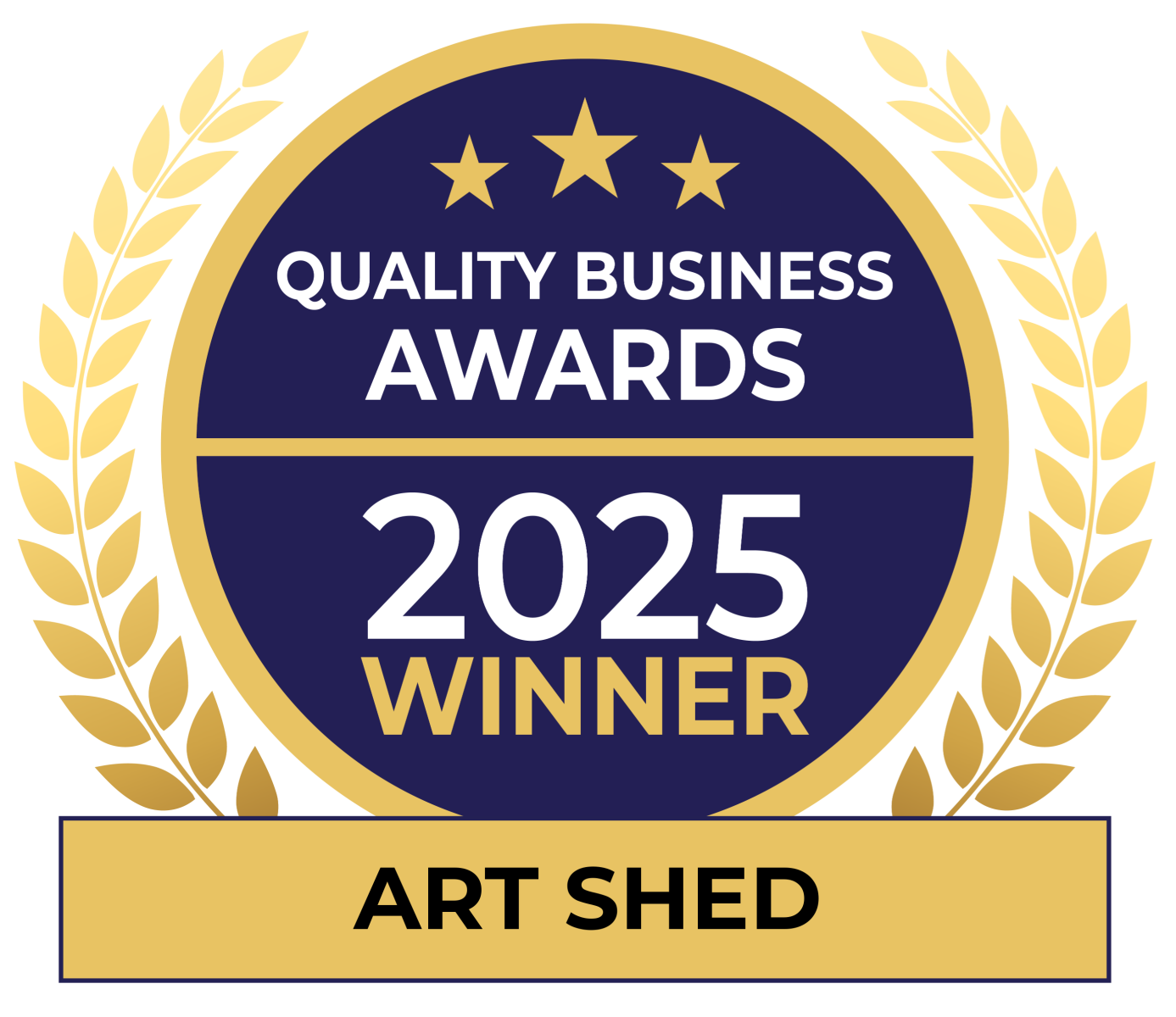Mont Marte Canvas Comparison: Signature vs Premium, Single vs Double Thick
Author: Art Shed Team Date Posted:7 July 2025
.png)
Canvas is a durable, stable surface that artists have painted on for centuries, and Mont Marte canvases are trusted by beginners and professionals alike. From acrylics and oils to impasto, collage and bold expressionist pieces, a quality stretched canvas is the perfect base to create to your heart’s content.
Many iconic artists have brought their vision to life on canvas, creating incredible, magnetic pieces.
Only in recent years have stretched canvases become readily available, with many artists before their accessibility using cardboard, timber or Masonite as a support, which lack the quality and flexibility of canvas.
With an extensive range of shapes, sizes and styles, it can be challenging to decide which canvas is best for you. Keep reading for our beginner-friendly guide to choosing and looking after your canvas, so you can start creating your very own masterpiece.
Our two most popular ranges:
.png)
So what's the difference? Signature Vs Premium Canvas
Mont Marte makes fantastic canvases that come in a couple of different ranges. Our two most popular ranges are the Signature and Premium (Professional) ranges. The Signature range is perfect for students and beginners, or those after a budget-friendly option. The Premium range is an excellent option for artists or those seeking a higher-quality canvas.
Both the Signature and Premium ranges come in a Single or double-thick profile, which determines how far the canvas protrudes from the wall when hung. The single thick has a frame thickness of 18mm, and the double is 38mm. The double-thick has a far more distinct and bold presence, appearing to “jump out” from the environment with its thicker sides.
.png)
The significant difference between the Signature and the Premium range is in the canvas itself. Measured in ‘grams per square meter,’ the thicker the canvas, the stronger and more durable it will be, allowing for heavy technique applications. The thicker canvas also reduces the likelihood of sagging. The Signature Single Thick range features a 280gsm Cotton Duck Canvas, the Signature Double Thick range boasts a 340gsm Cotton Duck Canvas, while the Premium range is crafted with 380gsm Cotton Duck Canvas.
These canvases are triple primed and ready to paint on.
Frame
The wood used for the frame of the canvas (or “stretcher bars”) has a stronger, denser consistency in the Premium range when compared to the Signature range. Generally, stretcher bars are made from timber, such as pine, which is dried multiple times in large kilns to reduce the likelihood of the timber bowing. This stronger and denser wood adds some weight to the canvas, and it also means that it is less likely to warp if exposed to moisture, sunlight, or temperature fluctuations. Warping is ultimately inevitable when working with wooden stretcher bars - this is a natural characteristic of wood. However, having a thicker frame means a lower chance of this happening within your lifetime. Smaller-scale canvases are also less likely to warp. For larger canvases of 60cm and over, we recommend choosing a double-thick canvas to reduce the chances of warping and maximise the longevity of your artwork.
Another key feature of the Mont Marte Canvas frames is the finger joints used to assemble the wood frame. Rather than using a single long piece of wood to construct a frame, Mont Marte pieces together strips of wood to reduce bowing and warping, creating a more stable frame.
Staples
Another main difference between the Signature range and the Premium range canvases lies in the staples. The Signature range is single-stapled, while the Premium range is double-stapled for extra strength, ensuring the canvas remains tight and sturdy.
Cotton Vs Linen
When it comes to choosing between a cotton and a linen canvas, there are several factors to consider.
Cotton is a relatively absorbent and more affordable alternative to linen, characterised by a rougher texture. Linen is, by comparison, a more traditional surface that is flexible, less absorbent, has a lovely fine texture, and is often used by Professional Artists. These textural differences definitely show when applying paint to canvas. Cotton will absorb a decent amount of paint with the first few layers, while linen offers a smooth surface from the get-go, allowing paint to glide beautifully and seamlessly. To achieve a smooth, linen-like surface when using a cotton canvas, applying a layer or two of gesso to the canvas before painting will help reduce the canvas’s absorption. The same can be said when working with the Mont Marte Signature Range. A few initial coats of gesso will help create a surface similar to that of a Premium Range canvas.
.png)
Choosing your canvas
You can tell the quality of a canvas by looking at the back of it. If the cotton is a cream colour with little speckles through it, you are looking at an unbleached and fairly heavy cotton which is suitable for most painters.
If you are charging top dollar for your artwork or it is a commissioned piece, don’t skimp on the quality of the canvas you use. You don’t want to use a lighter-weight canvas or a lower-grade stretcher.
MONT MARTE SIGNATURE CANVAS SINGLE THICK
The Mont Marte Signature Single Thick Canvas is acid-free and unbleached, featuring single staples that hold the 280gsm cotton duck-stretched canvas to the 18mm frame. It is triple-coated with a Universal Primer, kiln dried and has gallery corners. The Signature range is ideal for students, beginners, or those looking to experiment at an affordable price.
MONT MARTE SIGNATURE CANVAS DOUBLE THICK
The Mont Marte Signature Double Thick Canvas is acid-free and unbleached, featuring single staples that hold the 280gsm cotton duck-stretched canvas to the thicker 38mm frame. It is triple-coated with a Universal Primer, kiln dried and has gallery corners. Perfect for students, beginners or those looking to experiment who want a deeper, contemporary look.
MONT MARTE PREMIUM SERIES SINGLE THICK CANVAS
The Mont Marte Premium Single Thick Canvas is acid-free and unbleached, featuring double staples that hold the 380gsm Cotton Duck stretched canvas to the 18mm frame. It is triple-coated with a Universal Primer, kiln-dried, and features gallery corners and mitred edges. The premium range is ideal for both seasoned and young artists, offering a high-quality foundation to showcase your artistic vision.
MONT MARTE PREMIUM SERIES CANVAS DOUBLE THICK
The Mont Marte Premium Double Thick Canvas is acid-free and unbleached, featuring double staples that hold the 380gsm cotton duck-stretched canvas to the thicker 38mm frame. It is triple-coated with a Universal Primer, kiln-dried, and features gallery corners and mitred edges. Perfect for seasoned and young artists alike, offering a high-quality base and a deeper frame to create bold and captivating works.
MONT MARTE ARTISTE 100% NATURAL LINEN CANVAS
The Mont Marte Linen range features gallery-folded corners and the finest quality linen. The 100% natural linen weave offers a beautiful medium to fine textured surface that is double back-stapled for added strength. The 38mm (1.5in) deep warp-resistant frame offers a contemporary, clean edge look with no further framing required. Triple-coated with a universal white primer and ready to be painted on, this canvas series is favoured by professional artists and is suitable for use with both acrylic paints and oils.
.png)
The Mont Marte Canvas Panels are acid-free and coated with acrylic primer, allowing you to start painting on them straight out of the pack. Rather than a stretched frame, these have a strong, hardened card backing that is non-flexible and lightweight, making them ideal for transporting or creating pieces such as acrylic pours, as well as hand-painted placemats or coasters.
FAQs
What’s the difference between Mont Marte Signature and Premium canvas?
Mont Marte Signature canvases are perfect for beginners, students and everyday projects. They’re affordable and versatile. The Premium range utilises higher-quality materials, thicker frames, and stronger construction, making it ideal for professional artists or when you want your artwork to last longer.
Should I choose single thick or double thick canvas?
Single-thick canvases are lighter and great for quick studies or artworks you’ll frame later. Double-thick canvases have a deeper edge, appear more substantial on the wall, and don’t require an extra frame, making them perfect for finished pieces you want to hang as is.
Which Mont Marte canvas is best for acrylic or oil painting?
Both Signature and Premium ranges work well with acrylics and oils. For sturdier support and a more professional feel, opt for the Premium double-thick option. For practice or classroom use, Signature single thick is an excellent, budget-friendly option.
Is linen canvas better than cotton?
Linen is stronger and has a finer, more natural texture than cotton. It’s less likely to stretch or sag over time and is highly valued by professional artists. Cotton is an affordable and versatile material, suitable for most painting styles, making it perfect for students and everyday practice.
Caring for your Canvas- How to avoid warping
Warping can be caused by a range of factors, including the climate of the space where you store your canvases, as well as any undue weight placed on the stretcher frame, such as when it is leaning against a wall.
If you are concerned about the bowing and warping of your stretcher frame, particularly with larger-sized canvases, ensure that you store your canvas in a room with a stable climate and one that's preferably not too humid. Wood, which is used for stretchers, is a natural material; although it has been dried, it will inevitably remain active and responsive to its environment.
Once your painting is finished, another way to prevent it from warping over time is to source and apply an external frame. This can also add dimension and a professional, visual appeal to your work.
If you are adamant about the canvas never warping and maintaining a rigid shape, then the only other option is to source and have your canvas stretched on an aluminium frame.
.png)
For a more in-depth learning on the different canvas types we stock, check out our YouTube video here.
Show us your creations on Instagram by tagging us @artshedonline
Happy creating!
Comments (2)
Canvases
By: Kerrie Dent on 19 February 2023That was great information about different canvases thank you
Art Shed Online Response
Thanks Kerrie, we are so glad you enjoyed it!
Differences in canvases.
By: Glenda Pospisil on 7 December 2020That was very interesting information on the diff canvases and quality. I feel more assured on buying online now. Thank you
Art Shed Online Response
Hi Glenda, Thank you for letting us know that you found this helpful! Let us know if you require any further assistance with your canvas choices, and happy creating!









